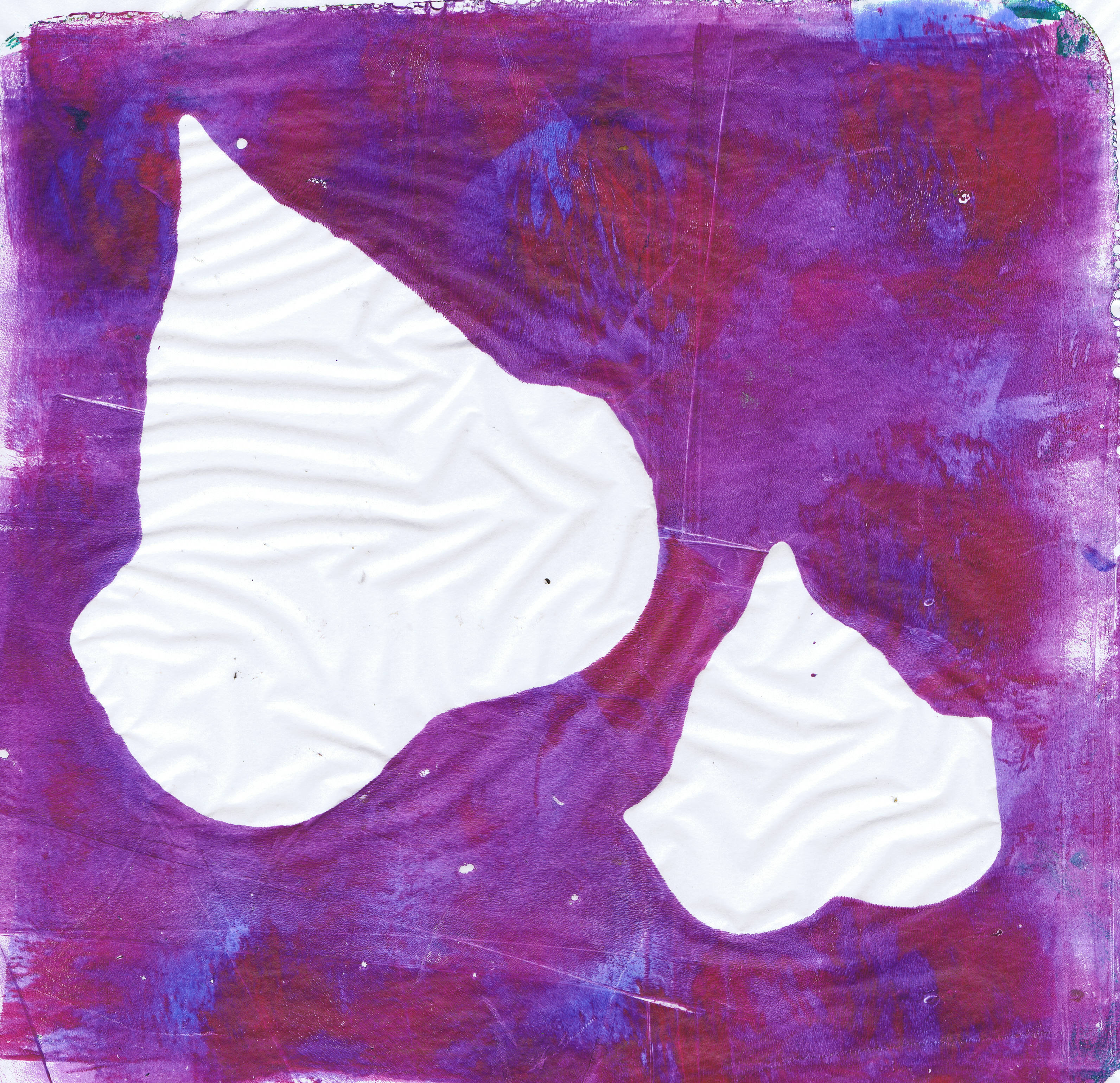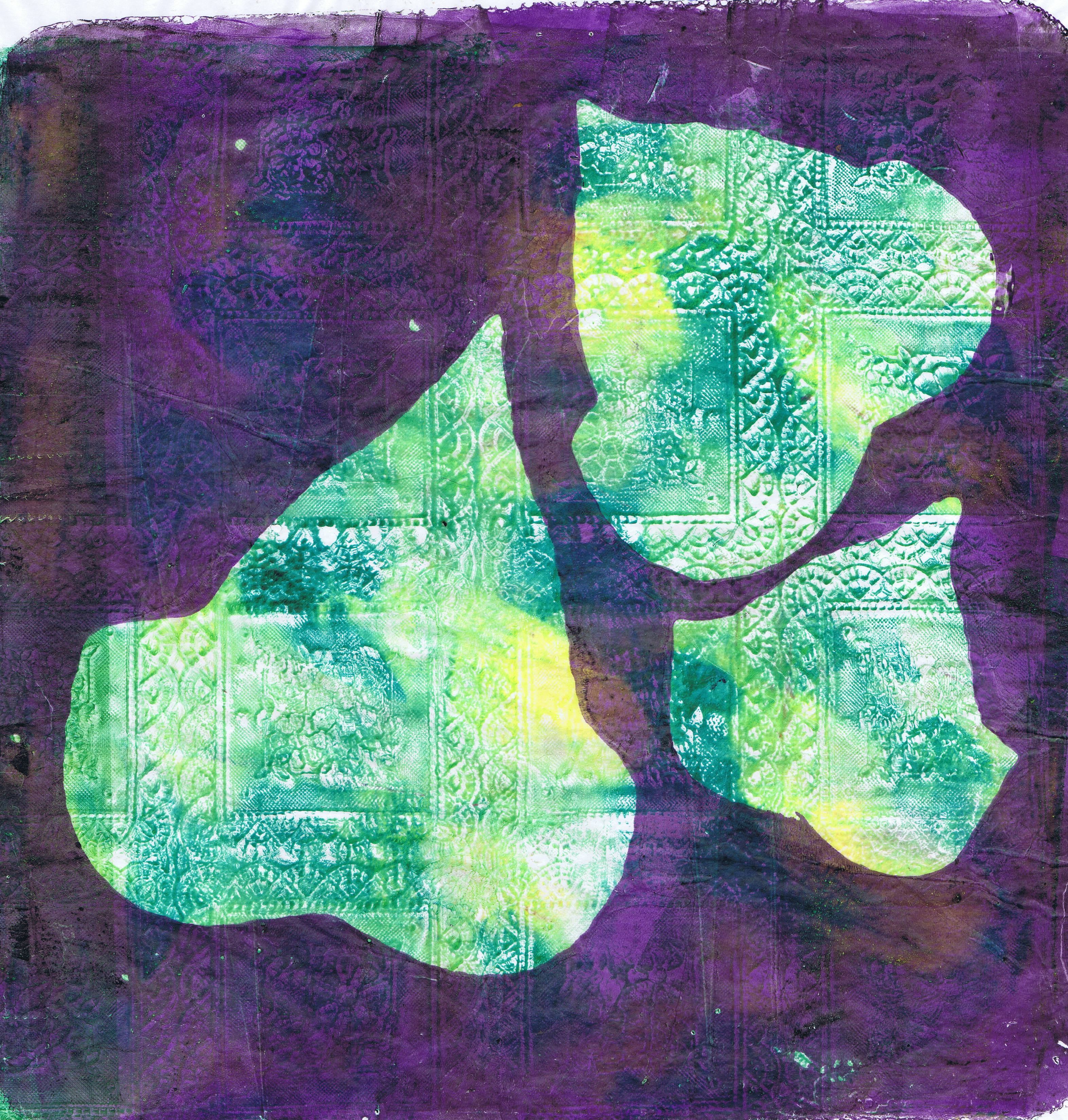I have not really been very productive lately, although I know some of you won't believe that, however I have really been doing a lot of reading and staying away from the computer. I recieved two books from
Kim Thittichai recently- "layered Textiles" and "experimental textiles", which I have been enjoying immensely. Layered textiles is about creating wonderful textures using many layers, heat tools, stitching and lots of other stuff. To that end, I have been painting non woven fabric such as light lutradur, fusible, nappy liner, tyvek and rainbow spun.
These are a few samples. The top one is nappy liner, which I spayed with my air gun. The bottom two are fusible, painted with acrylic. You can see on the middle picture I have ironed some glitter onto the fusible.
I wanted to create a water effect and tried a few different ways with the nappy liner.
I ironed the nappy liner down after cutting it with a heat tool. It created an interesting effect, but as you can see in several places, I was a bit impatient waiting for the baking paper to cool and some came away with my blue nappy liner still attached.
In the sample on the left, I ironed the pieces onto interfacing, but the iron was too hot and the interfacing wrinkled up. Ah well, we live and learn. In the right hand sample I just layered strips of coloured nappy liner on cotton and cut into it with the heat tool. This created while lines, and might be useful if I want to make foam on the waves in a sort of heat tool reverse applique.
I used some of the fusible in this piece. I ironed it onto a yucky beige fabric, which I had painted ages ago and it created the orange squares behind my leaves. In fact when I had ironed it on the fabric, I loved the marble like effect so much, I had to create something with it, so I cut lots of leaves from my huge collection of baby wipes which I use to mop up my paintin messes, then dry.
This piece is just fused down and sitting next to my free motion machine for stitching.
This is my sample for the stitching, which I made from left overs. I used purple and turquoise thread, but I think a little orange and gold will not go astray as it is a little flat at present.
The stitching was inspired by "retro inspired stitch samplers" by
Jackie Cardy in the jun/jul 2000 issue of
Quilting arts, which has been sitting in my to do pile for a long time.
I didn't forget the other book I was reading, "experimental textiles", it is full of yummy samples and is really about sketchbooks for textile art. I have been reading it together with another two books, "sketchbooks for embroiderers and textile artists" by
kay greenlees, and "
dreaming from the journal page" by
Melanie Testa as well as doing Melanie's online course "
dream Journal".
Wow, that was a mouthful and a lot of links to paste in! But I am, as you might gather, spending a lot of time in my sketchbooks at present. I also am watching "
Internationally inspired" from
donna downey, so I suppose I am doing stuff, it's just it's all very paper oriented, lol.
This is a quick sample from Melanie's course, where I am testing out different media, like watercolour, watercolour pencils, pastel pencils, water soluble wax and oil crayons, and crayola slicks, which are a bit like gelatos.
These two are pages from my journal, where I was just playing.
This page from my sketchbook is a few insects I was playing with.
At our art group at our community house we have been doing some beading, and these are two little bits I made. I have made a few more, but haven't photographed them, and will show you next time.
I think that's enough for one post.






















































